Catching Up
I’ve received a few emails from people wondering why I haven’t written anything on my personal blog lately. And honestly, I was surprised to look and see the last post was a month ago. I usually use Saturday mornings for catching up with things I’ve been meaning to do — like post something on this blog — but this is the first Saturday in 4 weeks that I haven’t either been attending media events at Kennedy Space Center, hosting visitors here in Florida, or traveling hither and yon. More about the hither and yon part later. But since the initial goal of having this blog was to share my experiences of being on the Space Coast of Florida for two months, I had better bring things up to date, as my time here is quickly counting down. So what have I been doing the past month?
ENDEAVOUR LANDS on Feb 21, 2010:
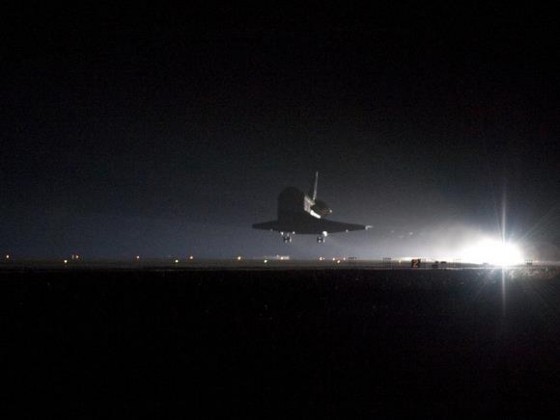
A beautiful end to the STS-130 mission — Endeavour appeared like a phantom out of the night sky, but not before announcing her arrival with two gargantuan sonic booms. Seeing the landing live and in person was wonderfully thrilling — although I have to admit, we probably would have seen more watching it on NASA TV, as — since it was a night landing we couldn’t see it until right before touchdown — and it rolled past our location quite quickly as the shuttle is traveling well over 200 mph (320 kph) when it hits the runway. Hearing the twin sonic booms is something I’ll never forget.
MY NEW JOB???
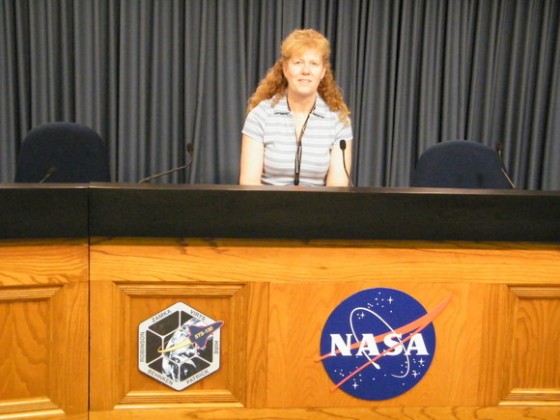
Nah. Fellow writer Ken Kremer and I just “practiced” sitting behind the dais in the KSC press auditorium, just in case they ever need any help at NASA TV, or if I ever get lucky enough to be the one launching on a rocket. Fun photo-op.
SEEING CLOSEOUT OF LEONARDO MODULE, Feb 18, 2010:
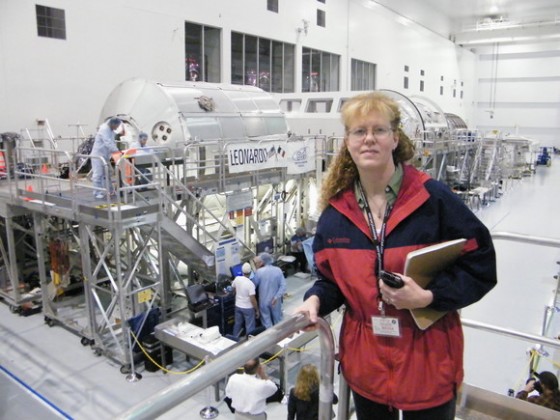
Another great experience was going to the Space Station Processing Facility at KSC and getting to walk the floor inside the giant clean room where the different modules and components are readied for their flight to the International Space Station. Technicians were just finishing packing the Leonardo Multi-Purpose Logistics Module that is heading up to the ISS on the STS-131 mission, bringing supplies and new components for the station.
Below, one of the technicians showed us the boxes where the US food is stored on the ISS. If you can’t read the label it says: “MEATS IN POUCHES AND CANS. ZERO-G USE ONLY.” I wonder what happens if you use it in 1-G?
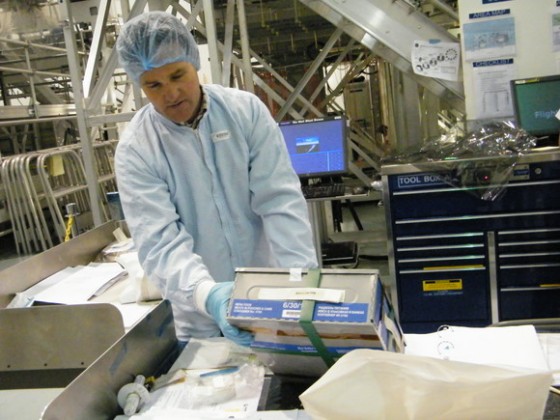
BEHIND THE SCENES AT NASA TV:
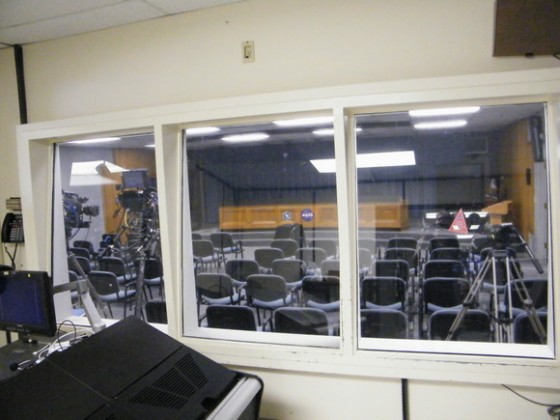
Since I probably will never work on camera at NASA TV, I decided to interview the people who work behind the scenes at KSC TV. You can listen to (or read) my interviews on Universe Today. It was very fun to talk with these great folks — and I also got to talk with George Diller, who I consider the voice of launches at KSC.
GOES-P LAUNCH ON A DELTA IV ROCKET on March 4, 2010
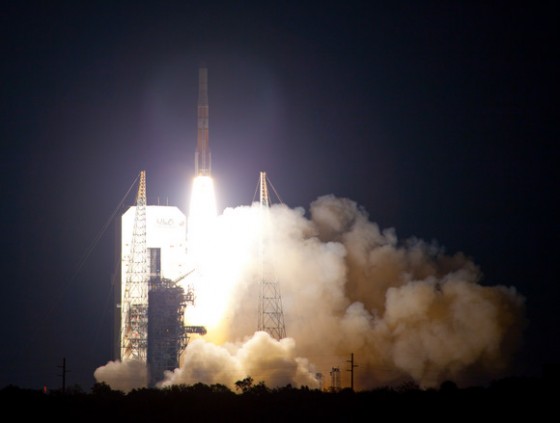
Another launch, another launch vehicle! I was duly impressed by the thunderous launch of the Delta IV rocket carrying the GOES-P satellite to space. Launch occurred just after sundown from launch pad 37B at Cape Canaveral Air Force Station. We got to be on the NASA Causeway, only about 2 miles from the launchpad. The rocket soared and roared into a crisp and clear night sky, and could be seen for several minutes after launch, and booster separation was clearly visible to us on the ground. With more oomph than the Atlas (plus we were closer) this is a rocket you can feel!
With me was photographer Alan Walters, who is now taking pictures for Universe Today. He has a couple of different cameras, and he used his big gun, but let me use his slightly smaller camera — which is much bigger and more powerful than my Fuji Finepix (which is leaps ahead of my former camera). Alan’s shot of the launch — which I love — is above, and here’s mine below:
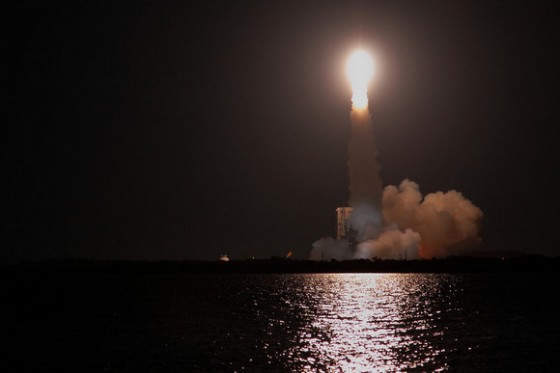
Yeah, I know, I’m off center! Alan told me I have that tendency. So what does that say about me?
The Geostationary Operational Environmental Satellite-P, or GOES-P, is the latest in a series of meteorological satellites designed to watch for storm development and weather conditions on Earth as well as detect hazards with its emergency beacon support and Search and Rescue Transponder.
ROLLOUT OF DISCOVERY MARCH 4, 2010
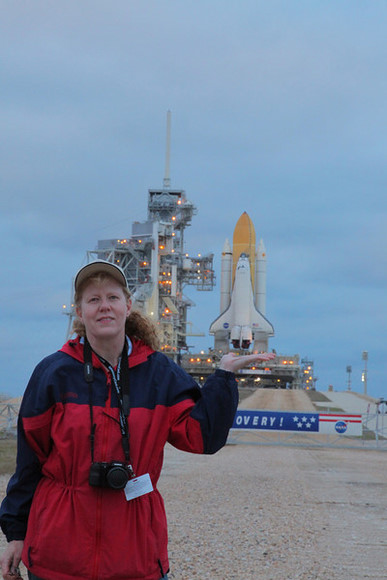
I’m going to talk more about watching the rollout of Discovery in another post because I captured something very unique, but here’s a fun picture that Alan took of me after the shuttle reached pad 39A.
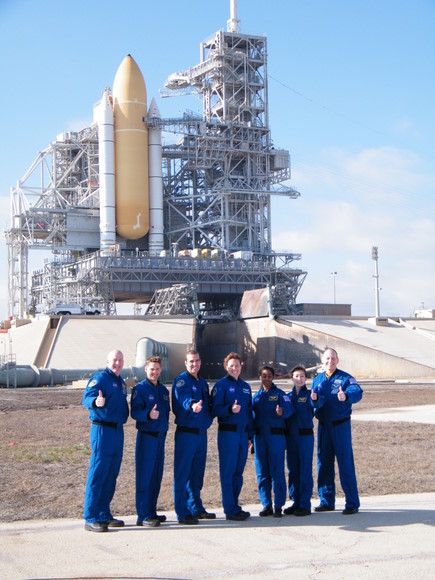
After the rollout, we had the chance for a photo-op and to interview the crew of the STS-131 mission, which hopefully will launch on April 5 (which unfortunately will be after I have to leave Florida.) Pictured here are: Commander Alan Poindexter, Jim Dutton, Rick Mastrachio, Dottie Metcalf-Lindenburger, Stephanie Wilson, Naoko Yamazaki, and Clay Anderson.
It was extremely cold and windy out behind the launchpad that morning, and if you watch the video of the event, you can see me wincing and shivering while I talked with the crew. Behind the crew you can see the flame trench where the exhaust of the the SRB’s whooshes through at ignition, and I think we all could have used a little flame that morning. Brrrr!
There’s more I could post, but this is getting long enough. Suffice to say I’ve been doing interviews, writing and podcasting almost non-stop since my arrival. Its been one of the most amazing times of my life.
And here’s the hither and yon picture:
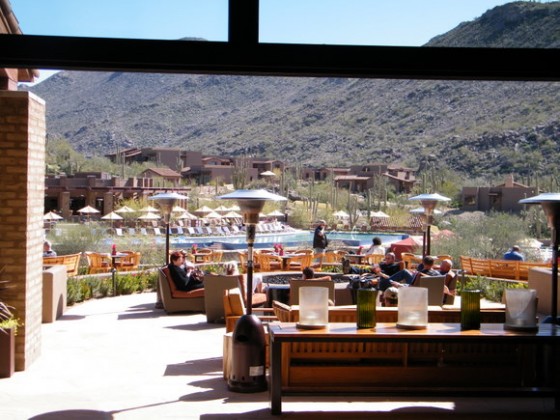
I took an unexpected side trip to Tucson, Arizona. Since it wasn’t warm enough in Florida, I thought I’d try Arizona! I met up with my wonderful husband to attend a conference with him, and had the opportunity to stay at a marvelous and beautiful new resort. Most fun was doing a very challenging 14-mile mountain bike ride. Had to traverse single track trails with big rocks, deep gullies, unexpected sand traps, — all the while watching out for cactus! It was exhilarating!
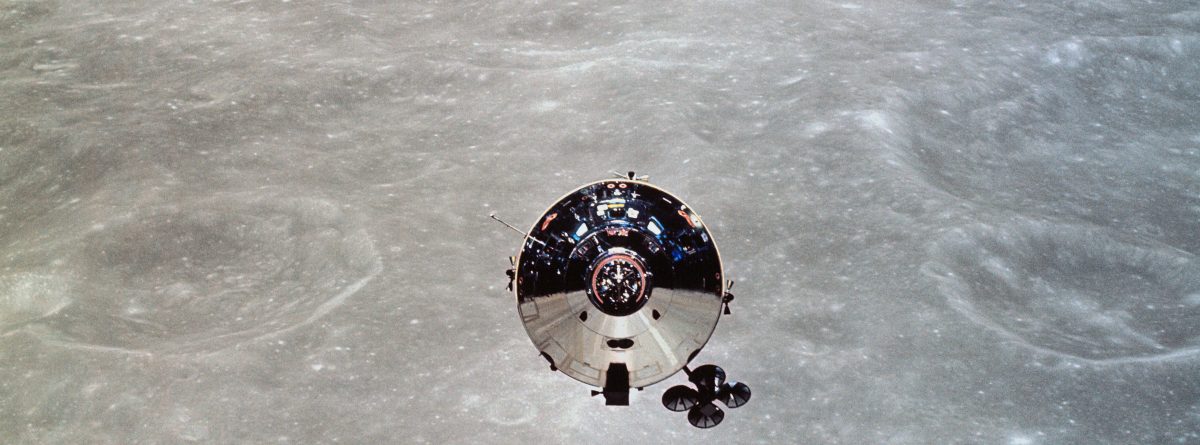
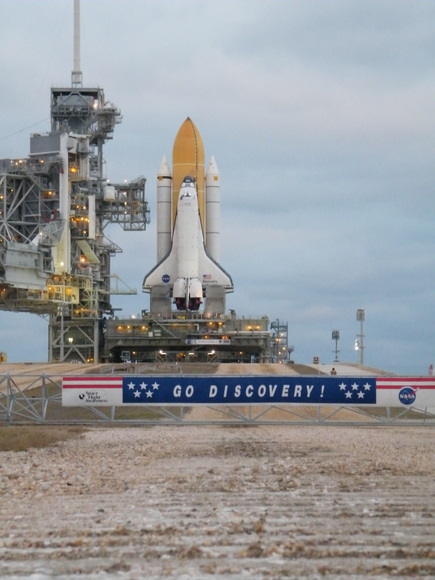
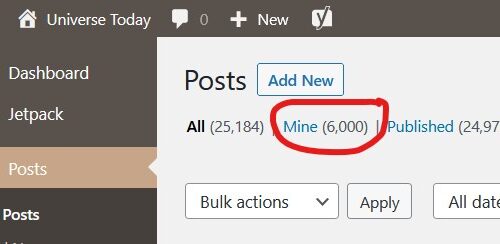

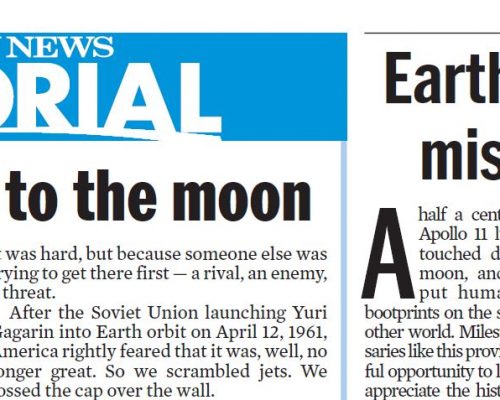
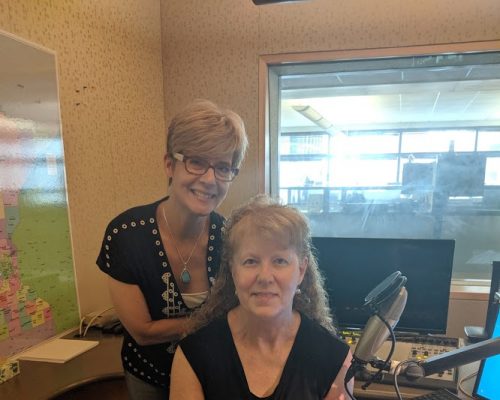
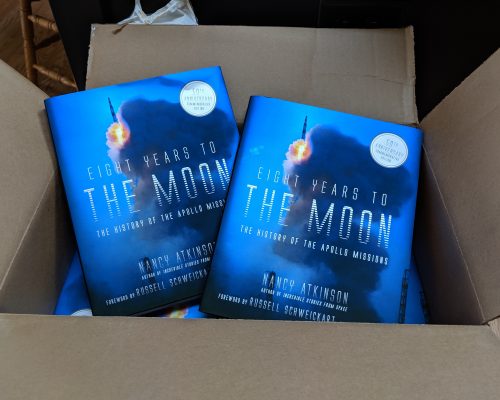
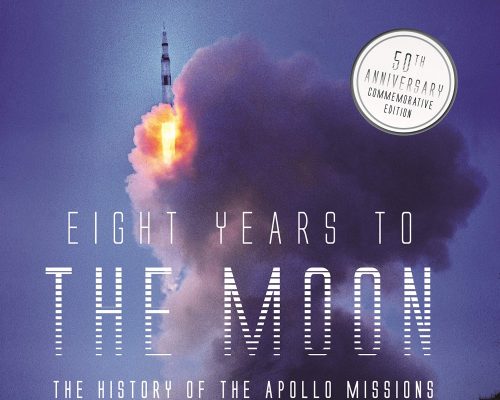
Comments
Hi Nancy, I came across your blog while following “flyingjenny” and I was explaining to my 8 yr old son about many things regarding the Space Shuttle and what it is used for. He has a love for space, NASA and the Space Shuttle and he asked me a question that he observed.
He wants to know why the ET has changed colors? It was much darker when he saw some of the previous launches and now it’s lighter…why is that? (His words I just did the typing.) lol
So I told him I would find out for him and I knew I could find someone online that worked in or around the shuttle program.
So if you have a little free time I would love to let him read an email from you about his question. Hopefully this isn’t a time buster for you and I explained to him that working with the shuttle, people are very busy and it may take a while, so no rush.
Thanks,
Virgil Lovett
BlkCigarCzar (Twitter) or BlkAv8tor2003 (Blog)
Hi Virgil-
Thanks for visiting my website! Your son has a great question — in fact I asked that very same question just a few weeks ago. I noticed that the color of the External Tank on Discovery was much lighter than I remembered the other tanks being. It turns out the answer to that question is: the sun! The UV rays from the sun makes the insulating foam on the tank darken.
The tank is sprayed with the insulating foam to help keep the liquid hydrogen and liquid oxygen in tank cold. The liquid hydrogen is -423 degrees and the liquid oxygen is -297, so its very cold!
When they spray on the foam at the factory that makes the tanks in Louisiana, the foam is a pale yellow color. The tank is put into a covered barge that takes it to Kennedy Space Center. From there it goes directly into the big Vertical Assembly Building, which is very close to where the barge drops it off, so the tank is not out in the sun very much. When I saw Discovery and the tank roll out to the launchpad on March 2, the foam still looked yellow. But last week I was back out at the launchpad (I’ll be posting those pictures soon on my website!) and the tank looked orange, like I always remember seeing it.
Your son has a keen eye for detail! Tell him to keep up the great questions and he’ll go far — maybe even to space one day!
Sincerely,
Nancy